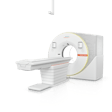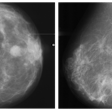CHICAGO – Dr. Lawrence W. Chan of Santa Barbara, CA, presented data Tuesday in the RSNA’s scientific sessions on his facility’s implementation of a PACS, showing solid user support and approval of the system in the two years since adoption.
Santa Barbara Cottage Hospital is a 300-bed facility that began systemwide implementation of a PACS in 1998. The hospital has been completely filmless in three modalities -- MRI, CT, and ultrasound -- since early 1999. In addition, some special procedures also rely solely on digital images. The facility is currently investigating the adoption of computed radiography to replace screen-film radiography.
Dr. Chan and his fellow researchers surveyed clinicians, radiologists, front-office personnel, and technologists regarding the effectiveness of the PACS and overall satisfaction with the system. Of the 74 surveys returned to the authors, 100% of the respondents stated their workflow was easier, and rated their satisfaction level as “extremely satisfied”. In addition, respondents also unanimously said they would recommend the PACS to colleagues at other institutions.
The authors also performed a cost analysis of the PACS. Based on data collected from the first year of implementation, the researchers determined a break-even point of the PACS vs. film would occur 3.5 years after adoption of the PACS. They based this projection on a 10% annual growth rate in the use of the modalities against the capital purchase expense of the PACS equipment. In addition, the authors also factored in the financing charges, service contracts, expected upgrade expenses, and the personnel cost of a PACS manager to their cost-effectiveness model.
The researchers also uncovered a 75% reduction in film use during the transition phase of moving from film to PACS, further validating the facility’s embracing of the new technology and workflow. The authors project savings of $210,000 per year solely in film-related costs.
“The capabilities of PACS contribute significantly to increased productivity of radiologists and referring physicians in our hospital. We feel this translates into improved patient care, through more efficient result-communication,” said Dr. Chan.
By Jonathan S. Batchelor
Auntminnie.com staff writer
November 29, 2000
Santa Barbara Cottage Hospital is a 300-bed facility that began systemwide implementation of a PACS in 1998. The hospital has been completely filmless in three modalities -- MRI, CT, and ultrasound -- since early 1999. In addition, some special procedures also rely solely on digital images. The facility is currently investigating the adoption of computed radiography to replace screen-film radiography.
Dr. Chan and his fellow researchers surveyed clinicians, radiologists, front-office personnel, and technologists regarding the effectiveness of the PACS and overall satisfaction with the system. Of the 74 surveys returned to the authors, 100% of the respondents stated their workflow was easier, and rated their satisfaction level as “extremely satisfied”. In addition, respondents also unanimously said they would recommend the PACS to colleagues at other institutions.
The authors also performed a cost analysis of the PACS. Based on data collected from the first year of implementation, the researchers determined a break-even point of the PACS vs. film would occur 3.5 years after adoption of the PACS. They based this projection on a 10% annual growth rate in the use of the modalities against the capital purchase expense of the PACS equipment. In addition, the authors also factored in the financing charges, service contracts, expected upgrade expenses, and the personnel cost of a PACS manager to their cost-effectiveness model.
The researchers also uncovered a 75% reduction in film use during the transition phase of moving from film to PACS, further validating the facility’s embracing of the new technology and workflow. The authors project savings of $210,000 per year solely in film-related costs.
“The capabilities of PACS contribute significantly to increased productivity of radiologists and referring physicians in our hospital. We feel this translates into improved patient care, through more efficient result-communication,” said Dr. Chan.
By Jonathan S. Batchelor
Auntminnie.com staff writer
November 29, 2000
Copyright © 2000 AuntMinnie.com
Click here to view the rest of AuntMinnie’s coverage of the 2000 RSNA conference.
Click here to post your comments about this story.



















